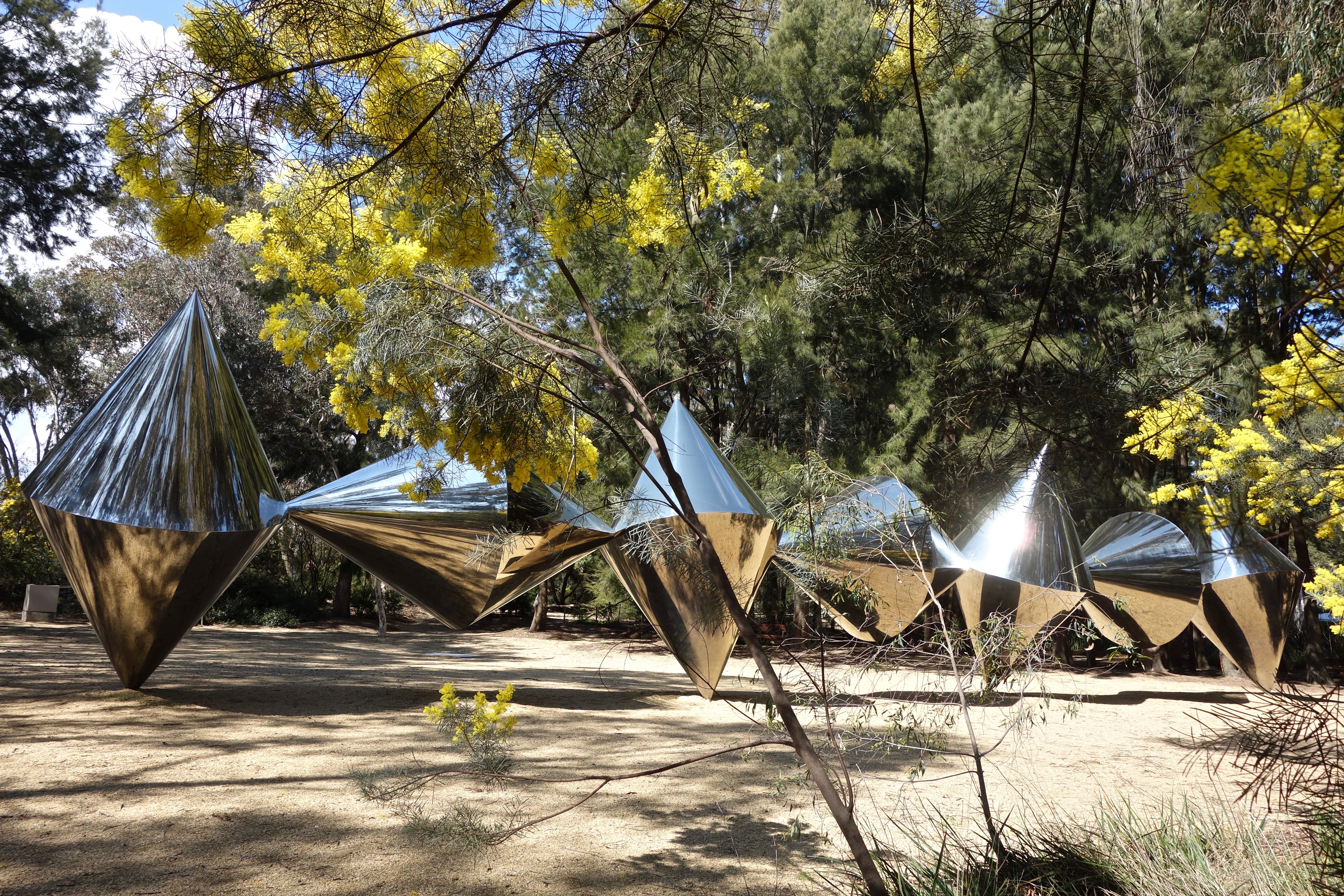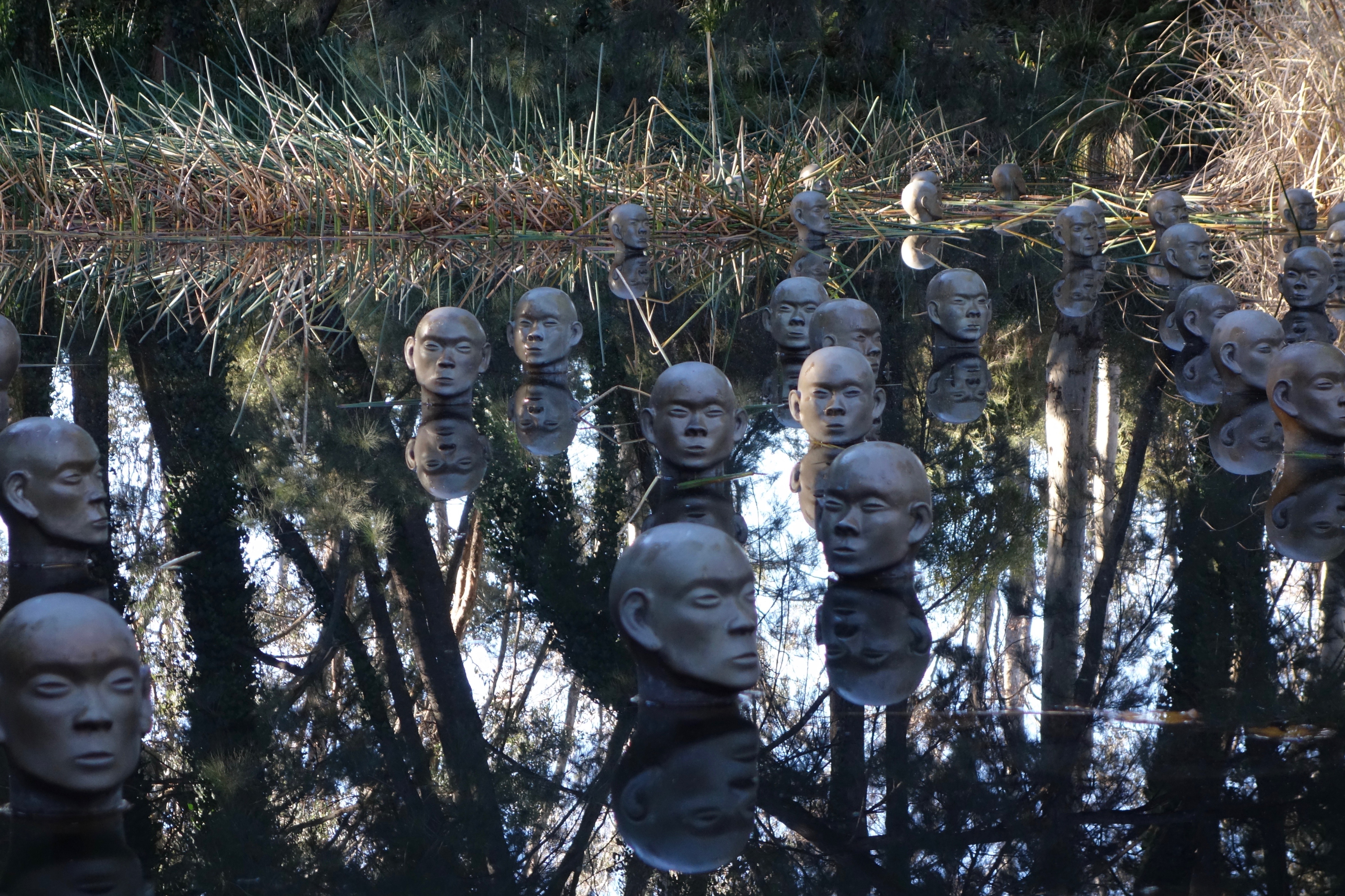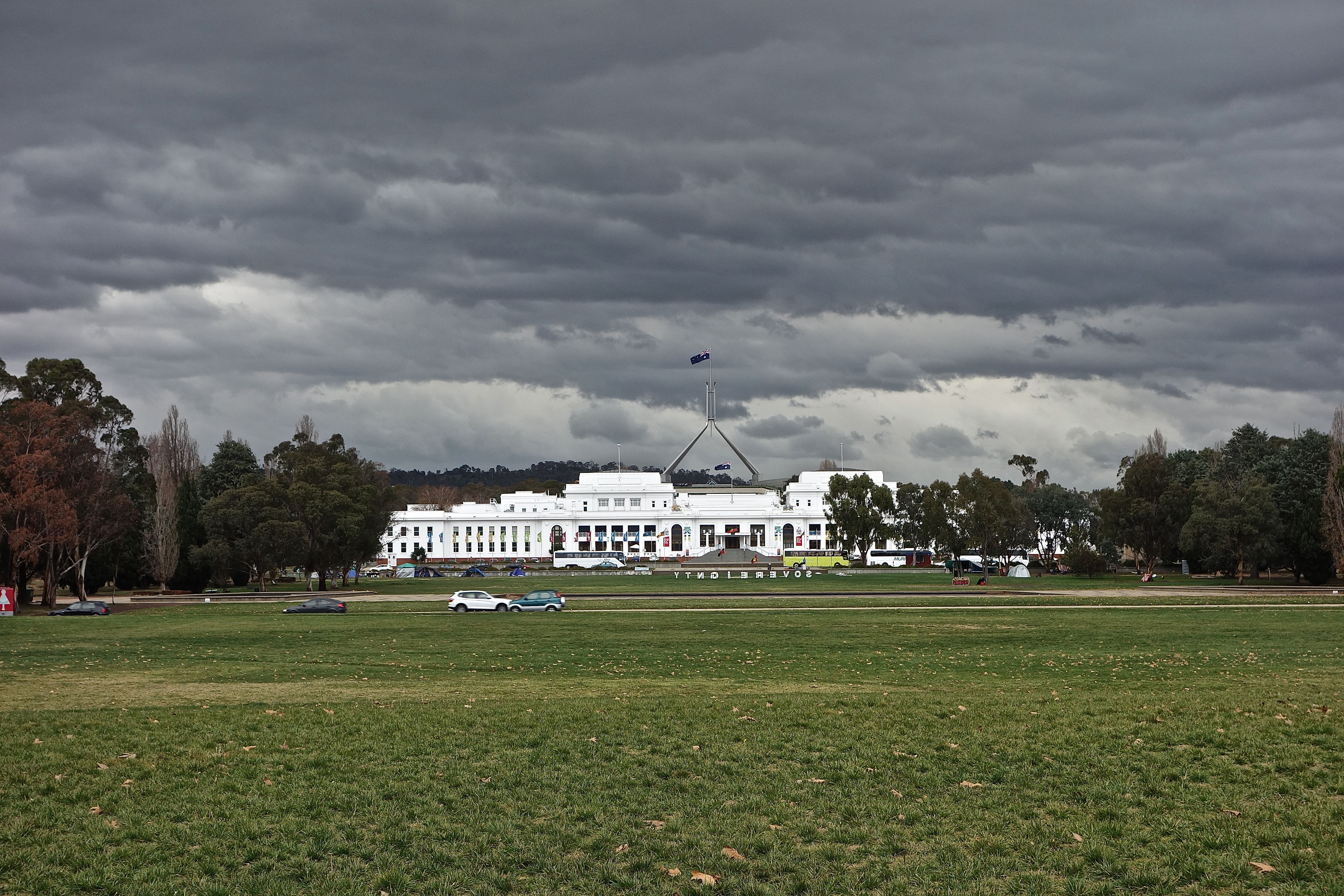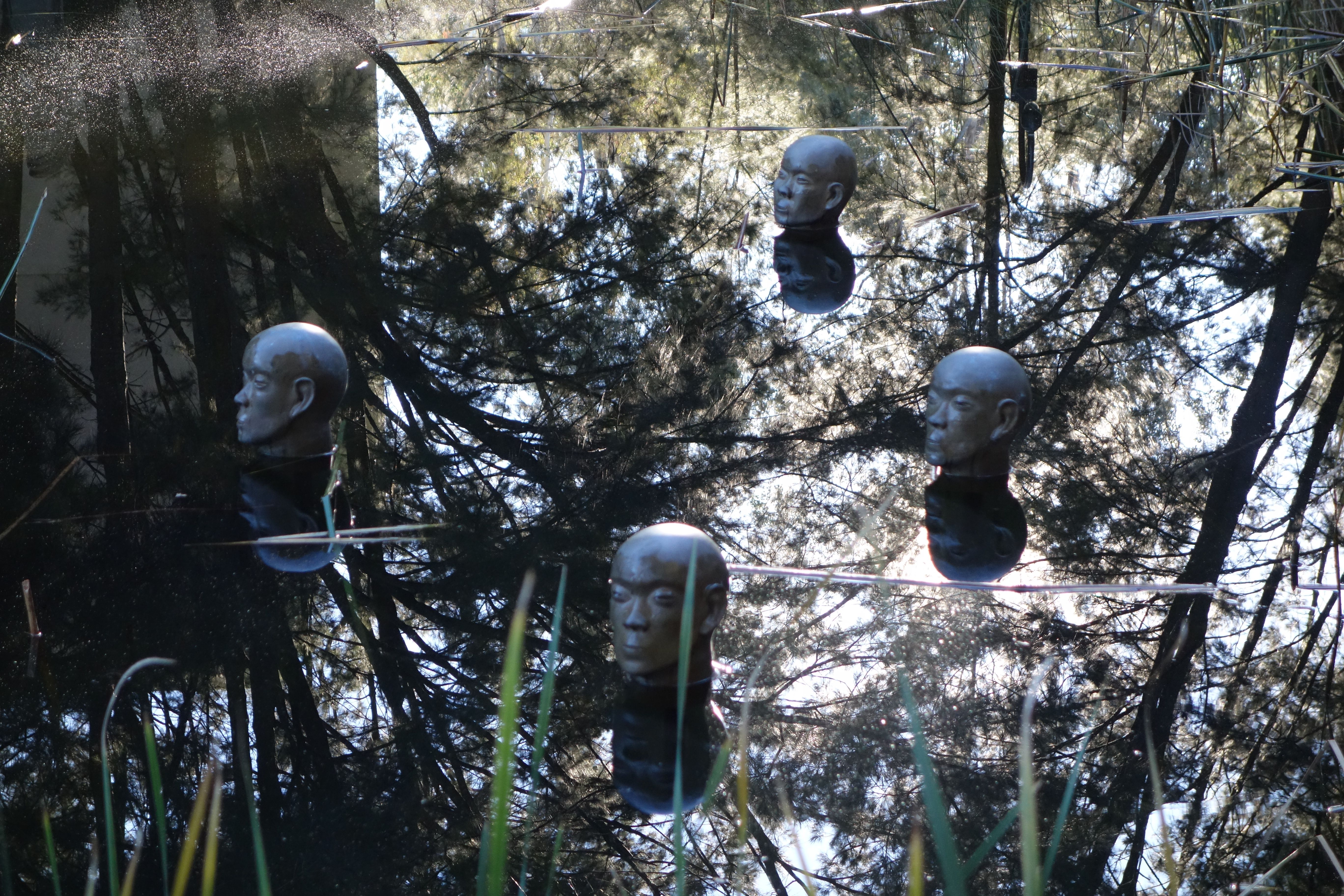Cones. Bert Flugelman (1923-2013) created them, and the National Gallery put them out under the blue Australian sky in the Sculpture Garden. Flugelman produced a number of stainless steel sculptures in Australia (where he lived), not to be confused with Austria (where he was born).

Children and adults alike love the 20 metres of image-distorting steel forms. You can be as thin, fat, short or tall as you want. Cones is a paradox, a totally unembellished minimalist artwork yet filled with detailed images. The seven iconic conic sculptures reflect this little bit of Australia, the sky and trees and flowers and dry sandy ground. And anyone standing around.
Today I was fortunate to find myself alone in this corner of the Garden to snap some photos sans visitors. My camera’s eye caught me in the stainless steel mirror, and my mind made a link to the nearby Portrait Gallery where I had just spent an hour, where I had seen a self-portrait of Bert Flugelman (it’s a sculpture), and now here he gives me my own self-portrait, an image of no one in particular. Indeed, it’s better (in my humble opinion) than the self-portraits by Ken Done and Sidney Nolan that really do look like no one in particular!

Thanks to the WordPress photo challenge, I was prompted to get my camera out today as I was passing through the Sculpture Garden.





















